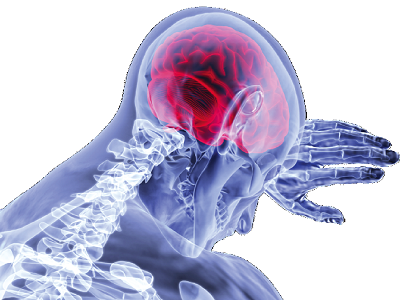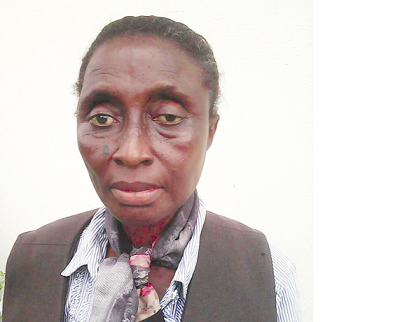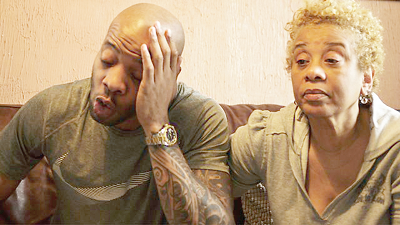
Up again after stroke - Fighting the debilitating brain attack
It was during the thanksgiving service of her wedding that Ms Eva Boakye felt a sudden stiffness in her neck and an excruciating headache.
Little did she know that the encounter she was having was stroke.
Advertisement
She only found out later at the hospital that she had suffered a stroke.
Narrating her story, Ms Boakye, who is currently the National Stroke Survivors Ambassador said: “It happened during the thanksgiving service for my wedding.
I felt stiffness in my neck and a severe headache.
I couldn't speak or do anything.
“I woke up the following day in the hospital to realise that the left side of my body was affected with a stroke.
It was the darkest moment in my life.
This condition has separated my husband from me and my family as well.”
Ms Boakye, who holds a Certificate in Secretariatship obtained from the Government Secretariat Institute in Accra, is championing the adoption and the implementation of the Global Stroke Bill of Rights and the prevention of stroke in Ghana.
She is advocating that “We should all join hands to fight stroke in Ghana” and opines, “There is hope for recovery I believe if we act ‘FAST’”
Warning signs
FAST is actually an acronym for the telltale signs of stroke knocking at the door, although the symptoms of stroke show so suddenly that most of the times, there isn't enough room left for a warning.
The letter ‘F’ is for a drooping face and experts warn that the moment a droop or an uneven smile is seen on a person's face, it is a warning sign of stroke.
A numbness in the arms or a little weakness is most likely a warning sign of stroke, experts believe and caution; “In case you feel unsure of the warning sign, ask the person to raise his or her arms. If the arms drop down or aren't steady when raised, it is a warning sign of stroke.
Another indicator is a slur in speech.
If a person suddenly finds it difficult to speak, it is a warning sign of stroke.
The last letter ‘T’ stands for time. “If a person is having any of the above symptoms or all of them, you need to act immediately and take the necessary steps such as call your doctor and for an ambulance,” the experts urge.
Some other symptoms of stroke include troubles in vision in both eyes, numbness in limbs on one side of the body, unexplained fatigue, experiencing difficulty while walking, feeling confused or finding trouble in understanding other people, trouble in seeing with one or both eyes, severe headache that comes for no reason and dizziness.

Stroke occurs when there is an attack on the brain
Toll of stroke
Unlike Ms Boakye, however, it is not everyone who is attacked by stroke also known as brain attack, that survives.
According to the Stroke Association Support Network – Ghana, stroke is one of Ghana’s biggest killers and a leading cause of disability.
It adds that one in six people will have a stroke in their lifetime, while according to the World Health Organisation (WHO), and other leading stroke experts, stroke claims 6.2 million lives each year.
An estimated 17.3 million people died from cardiovascular diseases (CVDs) in 2008, representing 30 per cent of all global deaths.
Of these deaths, an estimated 7.3 million were due to coronary heart disease and 6.2 million were due to stroke, the WHO says.
Experts say that stroke kills more people each year than AIDS, tuberculosis and malaria put together.
Available statistics indicate that in 2008, AIDS-related deaths totalled 2.0 million (1.7 million – 2.4 million); 1.8 million people died from TB in 2008, including 500,000 people with HIV; and there were 247 million cases of malaria in 2006, causing nearly one million deaths, mostly among African children.
World Stroke Day
It is to call attention to the around 80 million people living in the world today who have experienced a stroke and the over 50 million survivors who live with some form of permanent disability as a result that World Stroke Day is marked on October 29, every year.
The theme for this year’s commemoration was, “Up Again After Stroke: Support for life after stroke,” to focus on offering support to stroke survivors and raising awareness of the basic needs of stroke survivors and their caregivers.
According to the organisers, World Stroke Organisation, the provision of basic needs was required in order to provide the best possible quality of life for stroke survivors.
Stroke or brain attack occurs when the blood flow to the brain stops.
A person suffering from a stroke needs to be dealt with by taking quick and timely action.
According to the National Institute of Neurological Disorders and Stroke, it was important to get emergency help within an hour of a stroke attack in order to prevent long-term disability or death from the condition.
“While for many, life after stroke won’t be quite the same, with the right care and support, living a meaningful life is still possible.
As millions of stroke survivors show us every day, it is possible to get #UpAgainAfterStroke.
“While the impact of stroke will be different for everyone, on World Stroke Day on October 29, 2018, we want to focus the world’s attention on what unites stroke survivors and caregivers, namely their resilience and capacity to build on the things that stroke can’t take away; their determination to keep going on the recovery journey,” they stated.

Ms Eva Boakye, Ghana's Stroke Ambassador
Ghana’s situation
Marking the day in Ghana last Monday, the Deputy Programmes Manager for the Non Communicable Diseases Control Programme of the Ghana Health Service, Dr Afua Commey, said: “We do studies on patients who come and for most of them, being tested in the hospital is the first time they are checking their blood pressure and at that time, they realise they have hypertension and they have gone on to develop the stroke.”
She expressed worry that 50 to 70 per cent of Ghanaians had never checked their blood pressure before, although it provided easy signals that one was vulnerable to stroke.
“High blood pressure does not have any symptoms. You wouldn’t know until you check. Before you realise, the blood pressure gets out of hand and they develop stroke,” Dr Commey said, encouraging the public to do routine medical check-ups to know their blood pressure levels.
Meanwhile, the neurologist in charge of the Stroke Unit of the Komfo Anokye Teaching Hospital (KATH) in Kumasi, Dr Fred Stephen Sarfo, last year in an interview with the Daily Graphic stated that the hospital received about 1,000 cases of stroke every year, and that the disease was the leading cause of deaths among adults at the hospital.
In Ghana, several studies have also confirmed an increasing stroke burden, with one month in-hospital case fatality as high as 41–43 per cent.
In addition, the US Centres for Disease Control and Prevention (CDC) has reported that stroke is the fourth cause of mortality in Ghana.
Global status
Globally, about 16 million new cases of stroke and 62 million stroke survivors were estimated in 2005, with deaths from stroke accounting for 9.7 per cent of all global deaths, and this is expected to increase to over 23 million new stroke cases and 7.8 million stroke deaths by 2030 in the absence of significant global public health response.
Furthermore, 483,000 new stroke cases among people aged 15 years or more were estimated in Africa in 2009, equivalent to 81.2 (13.2–94.9)/100,000 person years. Also, a total of 1.89 million stroke survivors among people aged 15 years or more were estimated in Africa in 2009, with a prevalence of 317.3 (314.0–748.2)/100000 population.
Comparable figures for the year 2013 based on the same rates would amount to 535,000 (87.0–625.3) new stroke cases and 2.09 million (2.06–4.93) stroke survivors, suggesting an increase of 10.8 per cent and 9.6 per cent of incident stroke cases and stroke survivors respectively, attributable to population growth and ageing between 2009 and 2013.

Former Black Stars striker Junior Agogo spoke about how stroke had impacted his life when he appeared on BBC in London with his mother in October last year
What is stroke?
Stroke is a “brain attack” that cuts off vital supplies of blood and oxygen to the brain. A stroke happens when the blood supply to parts of the brain is cut off.
Over 80 per cent of strokes happen because of a blockage in an artery.
A cerebral thrombosis – when a blood clot forms in a main artery leading to the brain or a cerebral embolism – when a blood clot, or sometimes a piece of fatty debris from another part of the body is carried in the bloodstream to the brain.
A hemorrhagic stroke occurs when a blood vessel in the brain breaks, leaking blood into or around the brain.
Hemorrhagic strokes account for about 15 per cent of all strokes, yet are responsible for more than 30 per cent of all stroke deaths.
Intracerebral haemorrhage (ICH) is the most common type of hemorrhagic stroke.
It occurs when a blood vessel inside the brain ruptures, and leaks blood into surrounding brain tissue.
While an ICH causes blood to leak into the brain itself, a subarachnoid hemorrhage (SAH) occurs when blood spills into the space surrounding the brain.
Writer’s email: [email protected]



